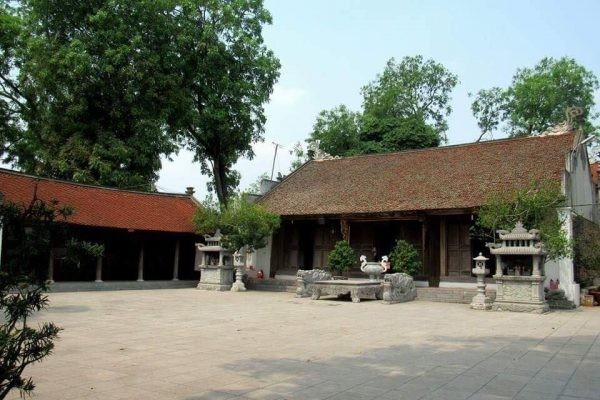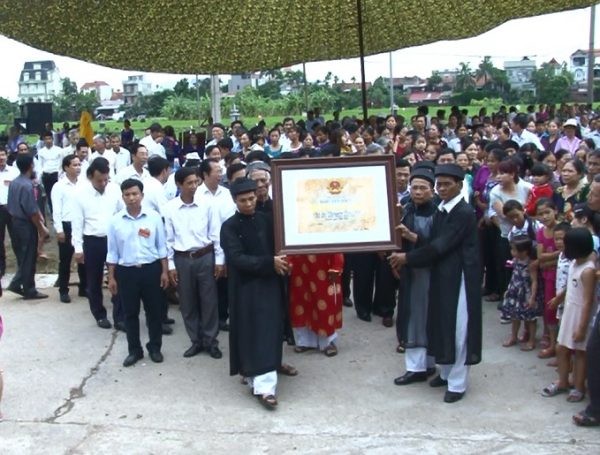In Phuc Tho district area, Hat Mon commune is wellknown by the special national historical relic – Hat Mon temple – a place of worship of Ha Ba Trung and its traditional festival which has been recognized as an intangible national cultural heritage. Not many know that this locality alias “First village and first commune” used to be a cradle of religious culture for people and visitors possessing 4 classified relics whose values have been kept, conserved and brought into play. Especially, the local administration always pays its attention to and focus on the task of relics conservation in contribution of building cultural finesses of the land strip of Doai among the Vietnamese ethnic community.

Hat Mon temple – Special national relic of Phuc tho district.
In Hat Mon, at present there are 4 relics which have been rated as: Hat Mon temple in worship of Ha Ba Trung, Ở Hát Môn hiện tại có 4 di tích đã được xếp hạng gồm: Đền Hát Môn thờ Hai Bà Trưng, Palace worshipping Prince Nguyen Ngoc Tri, Duc Thanh Thuy temple and Bao Lam pagoda. Folks in Hat Mon are not only proud of the historic length of its Party Committee, Administration and people during the entire country’s resistance struggle for national independence, but also the sacred piece of land where Ha Ba Trung and their insurgent troops chose as a base vowing to wave flag for uprisings, and it is right this place she sacrificed herself in the Hat river to return to the eternality.

Ceremony in recognition of the Worshipping Palace of Prince Nguyen Ngoc Tri, Hat Mon commune as the National Relic
With the remarkable achievements in the process of newly rural building and socio-economic development in Hat Mon commune, it is confident that the administration and people will continue to preserve, conserve and bring into play its relics’s values. By doing so, it will make great contribution to widely promoting Phuc Tho heroic land toward international friends and people in the whole country, and buidling it into a centre of religious tourism of the Capital of thousand year culture.
By Kim Van
